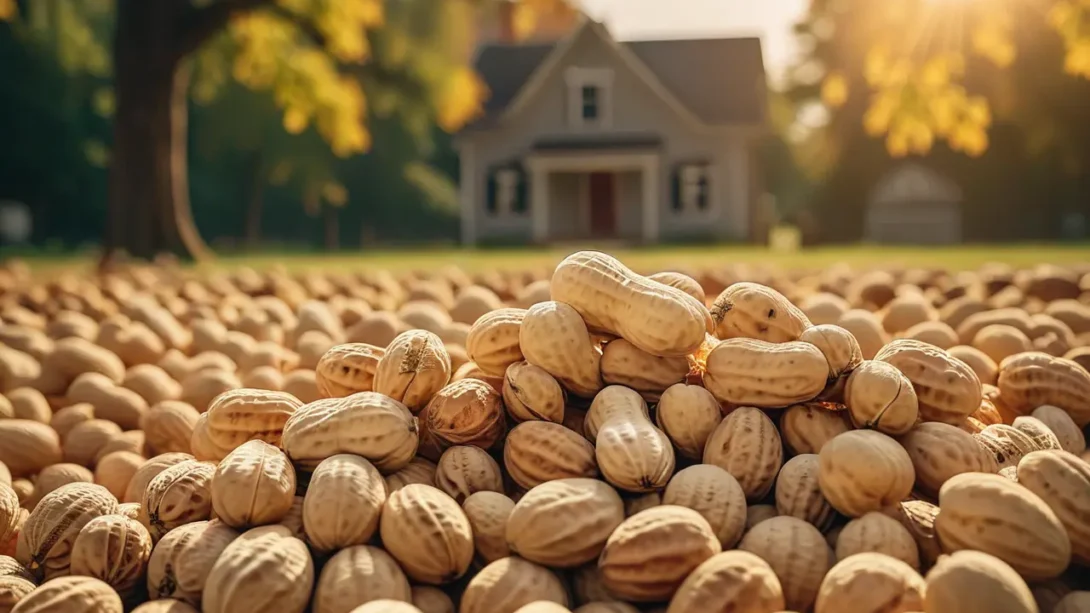Peanuts, with their widespread popularity as a snack and culinary ingredient, often spark curiosity regarding their botanical classification. Are they fruits, vegetables, or something else entirely? Understanding the distinction requires delving into the botanical definitions of fruits and vegetables, which differ significantly from the categories we use in everyday language.
Botanical Classifications
Botanical classification relies on specific criteria to organize plants based on their reproductive structures and how they develop from flowers. Key terms in this discussion include “legume,” referring to a type of fruit that comes from the Fabaceae family, and “seed,” the plant’s reproductive unit. This classification system helps distinguish between various plant types, providing clarity on where certain foods fit within the botanical world.
The Nature of Peanuts
Peanuts (Arachis hypogaea) defy common expectations by belonging neither strictly to the fruit nor the vegetable categories in the botanical sense. Instead, they are classified as legumes, a type of plant whose members are known for their unique fruit and seed development. Peanuts develop underground, a characteristic that sets them apart from many other plants. After the flower pollinates, the stem elongates and drives the fertilized ovary into the ground, where the peanut matures. This growth process, termed geocarpy, is a fascinating aspect of the peanut’s life cycle, emphasizing its unique place in the plant kingdom.
Peanuts as Legumes
Peanuts fit into the category of legumes, which is distinct from traditional fruits and vegetables due to several defining features. Legumes are primarily characterized by their growth in pods, which also contain the seeds of the plant. This group includes a variety of well-known foods such as peas, beans, and lentils, in addition to peanuts. What sets peanuts apart even within the legume family is their unique method of development, where the pod containing the seeds matures underground, a process known as geocarpy.
The peanut plant plays a significant role in agriculture and environmental sustainability through nitrogen fixation. This process involves the conversion of atmospheric nitrogen into a form that plants can use, enriching the soil without the need for chemical fertilizers. Nitrogen fixation is facilitated by the symbiotic relationship between the peanut plant and specific bacteria in the soil, highlighting the ecological importance of peanuts beyond their nutritional and culinary value.
Comparing Peanuts to Common Fruits and Vegetables
When comparing peanuts to typical fruits, it’s clear that they lack the sweet, fleshy parts associated with fruit, such as apples or berries. Fruits are the mature ovaries of flowering plants, usually containing seeds. On the other hand, vegetables are parts of the plant itself, such as leaves, stems, roots, and bulbs. Peanuts do not fit neatly into either of these categories due to their leguminous nature and underground seed development.
Similarly, comparing peanuts to common vegetables reveals significant differences. Vegetables like carrots and lettuce are consumed for their various plant parts, not for the seeds within a pod. This distinction is crucial in understanding why peanuts cannot be classified as vegetables from a botanical perspective. Their classification as legumes is a more accurate reflection of their botanical nature and reproductive strategy.
Nutritional Profile of Peanuts
Nutritionally, peanuts are a powerhouse, offering a high content of proteins, fats (primarily unsaturated), vitamins, and minerals. This nutritional profile sets them apart from most fruits and vegetables, which generally have higher water content and lower protein and fat levels. Peanuts are particularly noted for their vitamin E, niacin, folate, and magnesium content, contributing to various health benefits, including heart health and energy production.
Culinary Uses of Peanuts
Peanuts boast a remarkable versatility in the kitchen, transcending the traditional roles assigned to fruits and vegetables. Globally, they are cherished for their ability to enhance both savory and sweet dishes. In culinary practices, peanuts serve as a crucial ingredient in sauces, stews, and marinades in various cuisines, especially in African, Asian, and South American cooking. They are also ground into peanut butter, a beloved spread in many cultures, and used in confectionery and baking to add flavor and texture. This broad range of uses showcases peanuts’ unique culinary value, setting them apart from the more limited applications of many fruits and vegetables.
Conclusion
Understanding the botanical classification of peanuts as legumes rather than fruits or vegetables provides valuable insight into their nature, nutritional benefits, and culinary uses. This distinction is crucial not only for academic and agricultural purposes but also for dietary considerations, offering a greater appreciation for the diversity of plant-based foods available. Peanuts, with their unique growth process, nutritional profile, and versatility in cooking, stand out as a remarkable member of the legume family. Recognizing peanuts’ true classification enriches our knowledge of botany and nutrition and encourages a more nuanced appreciation of the foods we consume and enjoy. As we continue to explore and understand the vast world of plants, peanuts remind us of the incredible variety and nutritional wealth that nature offers, bridging the gap between culinary enjoyment and nutritional health.



